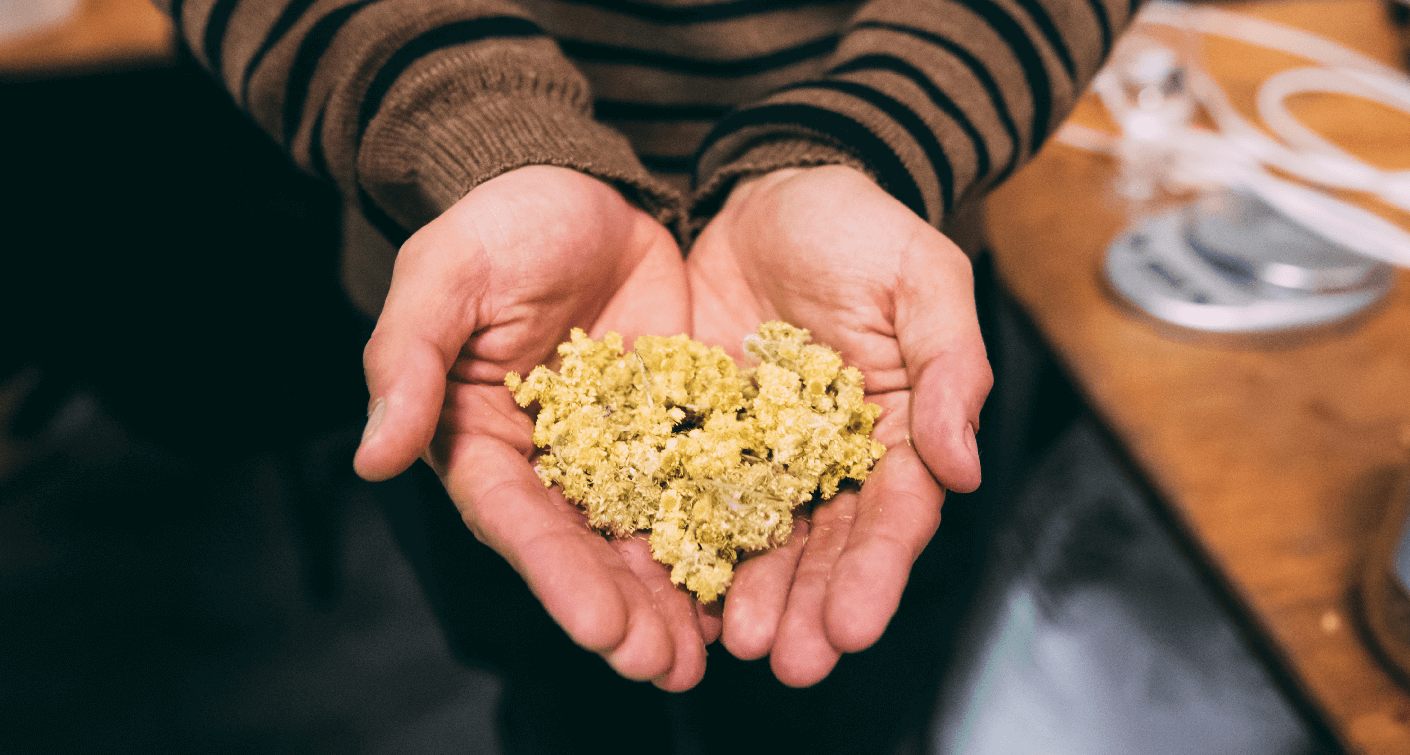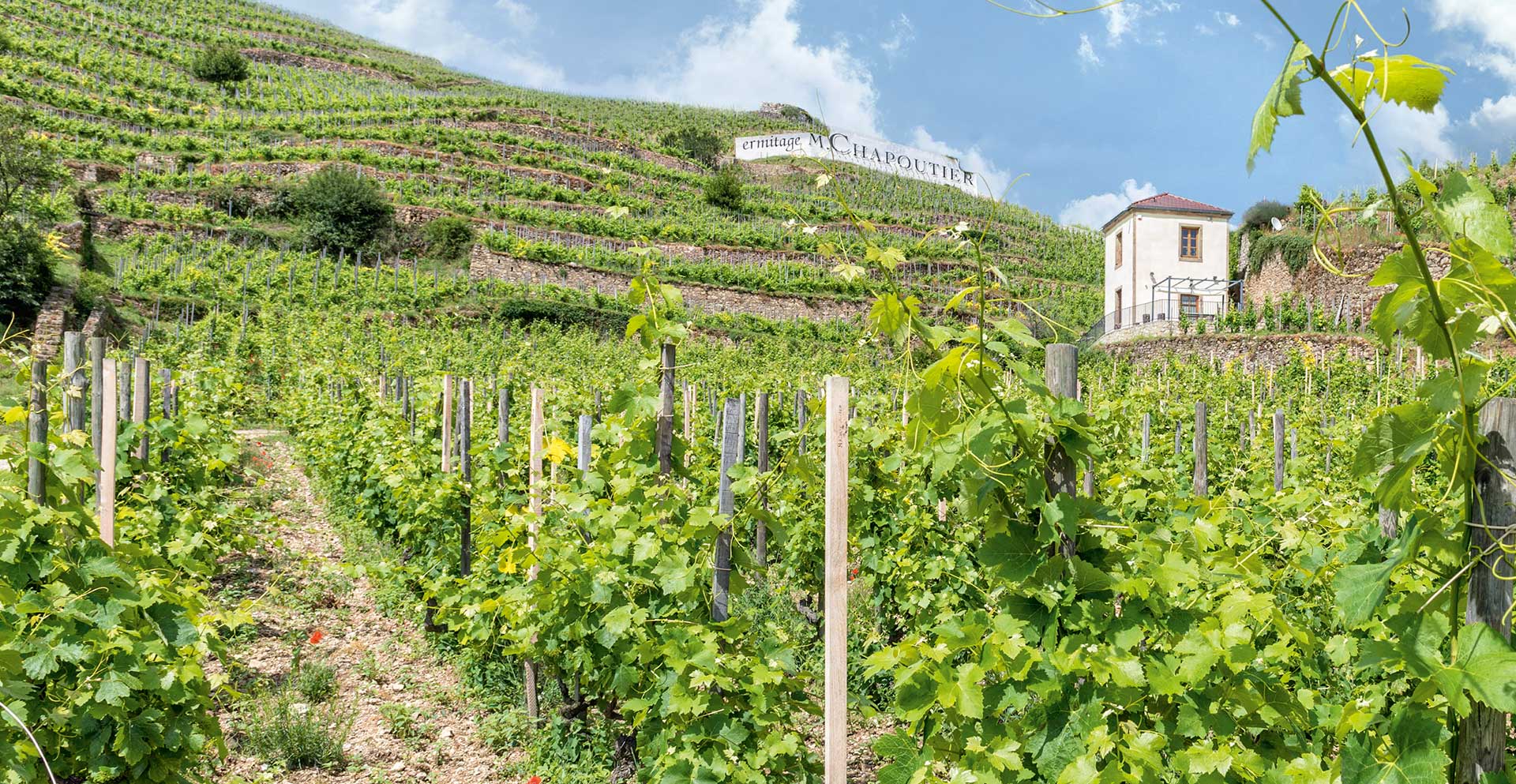Plants and terroir: the essence of our gin Sothis
Plants and terroir: the essence of our gin Sothis
M. CHAPOUTIER's life
09 December 2019

« Sothis gin is distilled from grapes and plants grown near the vineyards. This family domaine is cultivated using biodynamic practices in which plants play a central role. In their wild state they offer us a better understanding of the soils. When used in vine treatments they help to nourish plant life and support plant growth. I have selected a few of these plants in order to offer a new perspective of our terroirs, the story of a gin originating from the Tain l’Hermitage vineyards and their floral heritage. I have been honing this recipe for many months under the watchful eye of Sothis, the star and also the ancient Goddess who teaches us that cultivating the land is a means of moving closer to the stars » Maxime Chapoutier.
From a star in the sky to the roots in the soils
The star Sothis shines brighter than any other. Its appearance during summer solstice announces the beginning of harvest. This star is a symbol of fertility and is associated with the Goddess Isis in Egypt and the Goddess Demeter in Greece. It is also said to have existed as far back as the creation of the world. Men have been guided by the stars since time immemorial. In the creation of Sothis gin, Maxime Chapoutier was inspired by the terroir and everything it has to offer. The complex alchemy of the terroir. The intricate relationship between the quality of the soils, the climate and the intervention of man. Sothis gin is a reflection of this exchange between the skies and the soils. A reminder that every terroir is unique. It reveals its roots to us: the roots of the soils and the roots of a family.
The unique Hermitage hillside is formed of granite, loess, rounded pebbles. This is the only appellation in the world composed of the four geological eras, from the primary to the quaternary, which lends exceptional depth and diversity to the varietals grown here.
The aromatic profile of each plant must be sublimated. Maxime Chapoutier has carefully honed this recipe. The production process involves infusions, blends and long periods of distillation during which the components evaporate, from the most volatile to the least volatile.
The aromatic profile of each plant must be sublimated. Maxime Chapoutier has carefully honed this recipe. The production process involves infusions, blends and long periods of distillation during which the components evaporate, from the most volatile to the least volatile.
“I wanted this gin to be more than just a combination of components. I wanted each and every plant to come into its own and integrate harmoniously with the others.”
The Sothis botany
Common juniper
Derived from the Celtic “juniprus” meaning “bitter”, gin actually owes its name to the juniper plant. In the 17th century, it was used to conceal the mediocre quality of wines that had suffered as a result of lengthy transport by boat.
Wild thyme
This plant was used for embalming in ancient Egypt and its French name, Serpolet, derives from the same lexical origins as the word serpent. This is an interesting fact when we consider that it is also known for its healing properties against snake bites!
Chamomile
Associated with the divine sun, owing to the golden colour of its bracts. Its little sister Matricaria is used in biodynamic preparation 503 which helps to increase the production of calcium in organic matter.
Verbena officinalis
The Romans gave this plant holy status by using its dried branches in oath-taking ceremonies. In this Roman era, a shrine was erected at the top of the Hermitage hillside for the purpose of sacrifices of atonement and this plant was used as part of the purification ritual. A chapel has since been built on the same site.
Everlasting
This plant is found in rocky, arid soils. Apollo has been depicted wearing a tiara of immortal flowers whilst reciting his oracles, as a symbol of his immortality. Its colour is reminiscent of gold, although in the sense of spiritual wealth and fertility.
Hypericum
In the Middle Age, this plant, which was known as the ‘devil chaser’, was believed to ward off witches and evil spirits and was therefore hung over religious icons.
Yarrow
This plant was popular with alchemists who used its large leaves as a natural receptacle for dew and it was also used in the preparation of the philosopher’s stone. It is one of the seven plant ingredients that make up biodynamic preparation 502 which helps to heal the soil.
Juniper
Known as “little cedar”, the juniper used to be a Christmas tree. It produces berries of red color. Its enchanting fragrance and its great robustness are his signature.
The terroir and plants are at the heart of Sothis, a gin with a unique taste and inimitable aromatic profile that you can discover here.
The terroir and plants are at the heart of Sothis, a gin with a unique taste and inimitable aromatic profile that you can discover here.
The terroir and plants are at the heart of Sothis, a gin with a unique taste and inimitable aromatic profile that you can discover here.


